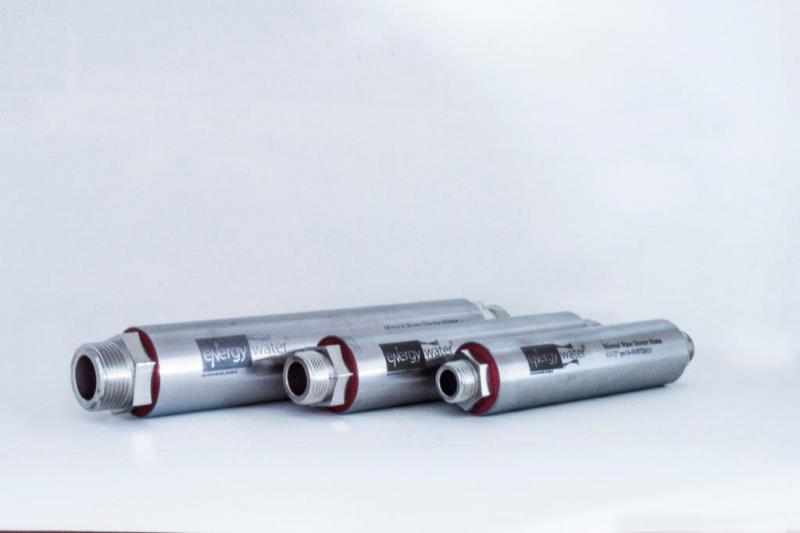Mineral Water Doctor
MWD (Mineral Water Doctor) is based on an electrochemical principle where the water potential (which contains salts of calcium, magnesium and other mineral compounds)during water flow through the device results in a potential difference in water of 0.7V - 1V depending on the density of saturated calcium salts and magnesium, otherwise known as total water hardness. At the same time from titanium-zinc anode, where zinc is up to 99.985%, into water releases free zinc ions, both cations and anions. Calcium dissolved in water (Ca + ²), which is the main cause of clogged water pipes and heat exchangers with limescale, is also found in water as hydrogen calcium carbonate - Ca (HCO3) 2. Due to the hydrodynamics of water and the change in water temperature, calcium bicarbonate is decomposed into carbon dioxide and poorly soluble calcium carbonate (CaCO3) 2 → CaCO3 + H2O + CO2. Released carbon dioxide - CO2 binds with the zinc-releasing cations of the anode (the anode in our product is Ti-Zn), producing zinc carbonate ZnCO3 (otherwise health-promoting mineral that is mainly used in the manufacture of medicines and cosmetics). Calcium CaCO3 crystallizing in the trigonal system produces aragonite CaCO3 crystallizing in the rhombic system. Aragonite and calcite is actually calcium carbonate, so from a chemical point of view, water hardly changes the hardness of the water, aragonite does not settle , cathodic free calcium (Ca + ²) is bound to free zinc anions and both are washable from pipes and heat exchangers. Of course, this only happens if the galvanic water treatment product is suitably manufactured. The MWD-mineral water product meets the following requirements. Naturally, in tests was found the consumption of anode at the flow rate of 1 m3 of water. In compliance from test was made design for larger flow and water consumption with replaceable electrodes. Of course, if the product contained only the Titanium zinc anode, it wouldn´t work. Therefore, the MWD product also contains a copper cathode with a copper content of up to 99.998% and unlike other types of galvanic water treatment the cathode is not a product sheath but is fitted in a polypropylene plaster - now most commonly used in potable water pipes.
info+ price list CZ (906 kB)
info+ price list SK (1161 kB)













